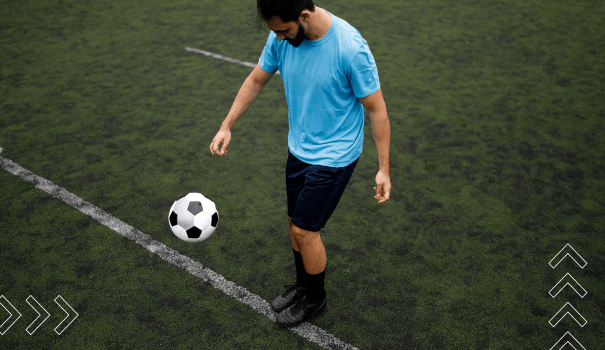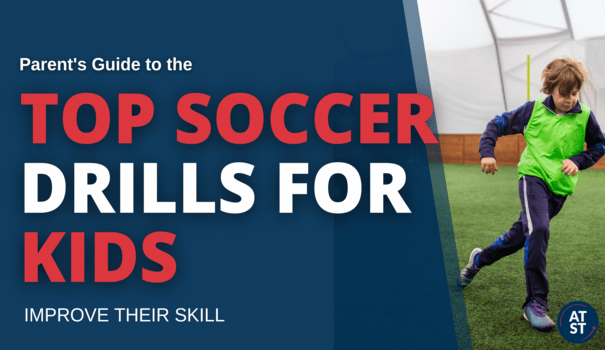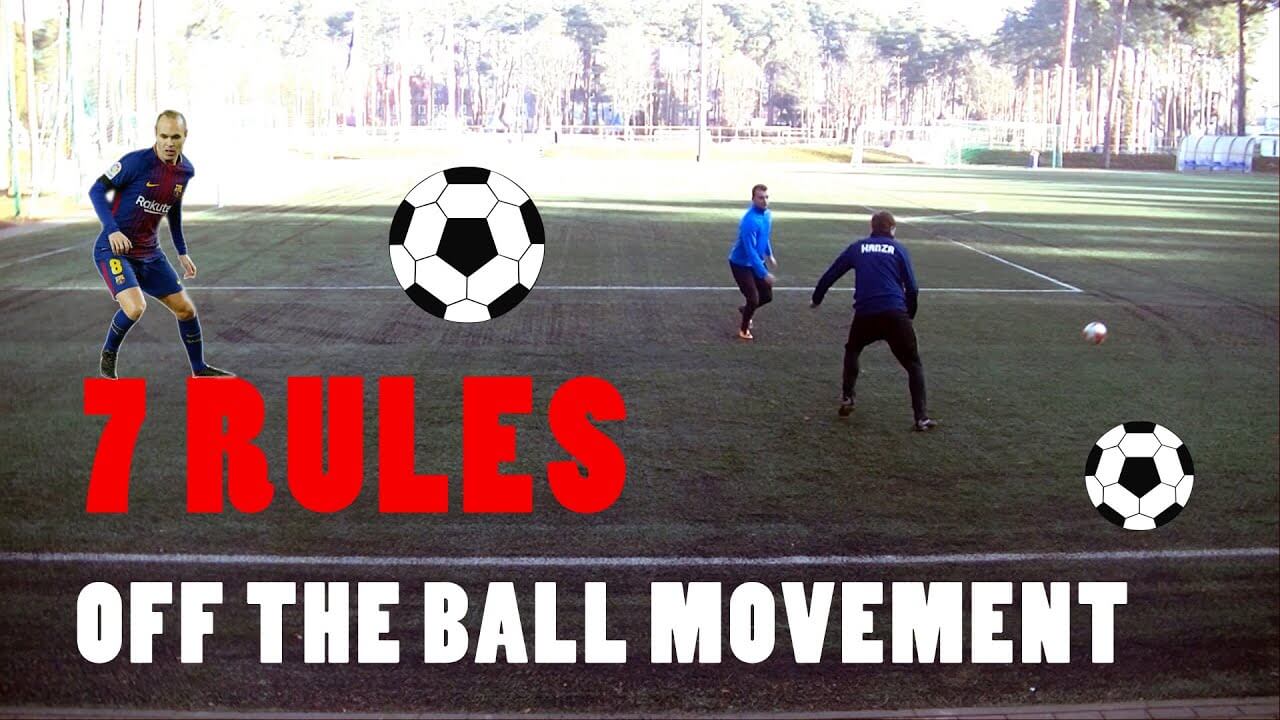Juggling and aerial control are fun and engaging activities that can help children develop important skills such as coordination, balance, and focus.
If your child is interested in learning these skills, there are several steps you can take to support their journey.
Why is Juggling Important
Occasionally, you will hear a parent (or even a coach) proclaim that juggling is not that important because it’s a skill rarely used in the game.
When you hear that – my advice is to politely smile, but keep practicing.
Juggling and aerial control exercises involve more than just keeping the ball up. Juggling improves a player’s first touch; and with younger players especially, it drastically improves balance, coordination, and their ability to use both feet.
Another often-overlooked benefit is that aerial training (when done correctly) can improve shooting and finishing techniques.
Game Examples
Even youth players are required to control the ball from any angle of the ground or air. Look at this video of my son when he was six years old. Notice he is not aimlessly kicking the ball in the air as many children do at this age.
He first controlled the ball from the air and then juggled it in the direction of his team’s goal. This led to a potential scoring opportunity.
Here is another example. Observe that aerial control was needed by each player before the player was in a position to score.
Now that we know how juggling helps improve your game and have seen some examples; follow the below tips to help your child smash their juggling record.
Start With the Basics
Juggling can be overwhelming for beginners, so it’s important to start with simple patterns. Begin by teaching your child how to juggle two balls back and forth. Once they have mastered this, you can gradually introduce more balls or different types of juggling props such as clubs or rings.
In some respects, juggling is like weightlifting. Every time you juggle, you strengthen muscles in your legs and grow cells in your brain. Your child needs time to build the necessary strength, coordination, and stamina needed for consistent aerial control.
Be Patient
Learning to juggle and control aerial props takes time and patience. It’s important to provide your child with positive reinforcement and encourage them to keep trying, even if they encounter difficulties.
Learning to juggle is a marathon, not a sprint. Like marathon training plans, when it comes to juggling, the player should increase training time and level of difficulty gradually.
In running, adding miles too quickly increases the risk of injury. Rapidly increasing juggling training may not cause bodily injury, but will certainly discourage your child from continuing.
Instead of making a single session really difficult; just add a challenge at the end. Challenges are fun and motivate your child to try their best.
Increase Efficiency Before Increasing Time
When it comes to juggling, it’s better to get five quality minutes than to struggle through 15 to 20 minutes with constant stops to chase the ball.
The formula for improvement is simple. The more you do, the better you will become.
Therefore, you want to maximize the number of reps in the shortest amount of time. See the sample video below.
This means you should stay at your level to maximize the number of touches and reduce the amount of time spent chasing the ball.
For example, a player who has a juggling record of 20, will still benefit from a juggle-catch or two to three juggles and catch.
It’s better that they do that and get more touches than the alternative of juggling a few times and stopping to chase the ball every few seconds.
Use Idle Time Wisely
This is a life skill that goes beyond juggling. If your child spends five minutes before practice and games doing an Anytime Soccer Training juggling video, their skill will increase dramatically.
And the best part is that once they get used to the routine – your child will barely notice the few extra minutes.
Don’t Over-Coach
Once you explain and they see a demonstration of the technique, they will gradually improve with practice.
Over-coaching can frustrate the child and lead to burnout. Instead, focus on providing guidance and encouragement, rather than giving too many specific instructions.
The key is repetition, not perfection.
You must be patient and remember that too many verbal instructions will just upset your child. If you feel yourself becoming frustrated, just walk away and let them own their training. It’s a marathon, not a sprint; as long as they are consistent, they will improve.
Above all, remember that soccer should be fun and enjoyable. Create a positive and supportive environment that encourages players to love the game and to be the best they can be.
Don’t Forget to Rest
Mental breaks are just as important as physical recovery. You should incorporate breaks within a session and take days off.
Stick to a Routine
The key to mastering juggling and aerial control is practice. Encourage your child to practice regularly and set goals for themselves, such as increasing the number of juggled balls or the duration of the juggle.
Implementing a standard routine helps your child focus on juggling and not instruction.
Anytime Soccer Training creates the routine and structure. It tracks where you left off and becomes progressively harder.
Provide Rewards
Rewarding a child for beating their personal best is an obvious and effective way to encourage practice. Keep track of their juggling record and stick it on the refrigerator.
Relax and Watch them Grow
This is not really a tip, but you will notice that once they become better at juggling, they will practice more on their own.
Related: Avoid these Mistakes
Enjoy watching them become more confident and skillful.
Use Balls of Different Sizes
You don’t need to be advanced to practice juggling with smaller balls. The key, however, is starting slow and following a slow progression.
For example, juggle-catch exercises with a size one ball or tennis ball is a great way to start.
Use All Parts of the Foot and Body
Another often overlooked part of juggling practice is how the player can utilize all parts of their feet and body. Practice controlling the ball from the air with all parts of your body and incorporate passing and finishing as well.
Use Gamification
Gamification encourages the player to try harder in a way that is fun and doesn’t frustrate them.
Children hate receiving a barrage of verbal instructions when they are practicing, especially from a parent. Instead, turn the exercise into a game or challenge.
Gamification is a great way to increase your child’s effort while avoiding a lot of verbal commands. Listen to this podcast to learn more.
Use Anytime Soccer Training
Anytime Soccer Training has over 500 juggling and aerial control training sessions that are 100% follow-along. They start with the very basic and gradually build up to and advanced level.
Equally important is that they challenge the player to use all parts of their body and both feet. All you have to do as a parent is hit play.
Check out the below videos to see the transformation of my own son’s aerial control and touch.
Before Anytime Soccer Training
With Anytime Soccer Training
Juggling and aerial control can be challenging and rewarding activities that can help children develop important skills. By following these steps, you can help your child master these fun and engaging activities.”













